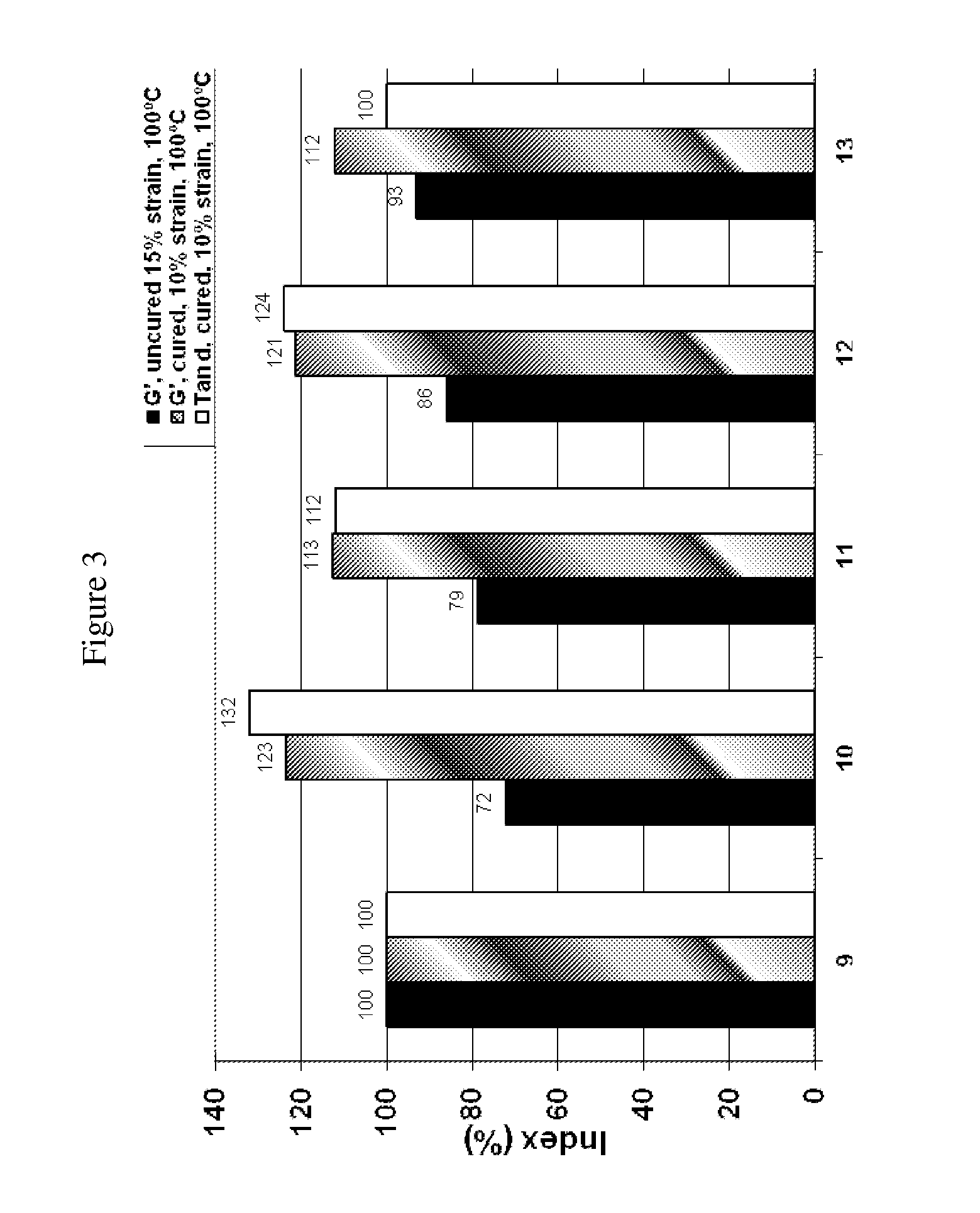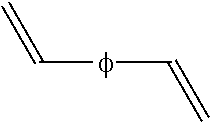Functionalized polymer, rubber composition and pneumatic tire
- Summary
- Abstract
- Description
- Claims
- Application Information
AI Technical Summary
Benefits of technology
Problems solved by technology
Method used
Image
Examples
example 1
Co-Polymerization of Styrene and Isoprene
[0061]Polymerizations were done in 1 gallon reactor at 65° C. Monomer premix of isoprene (90 percent) and styrene (10 percent) was charged into reactor containing hexanes followed by addition of modifier (DTP, ditetrahydrofurylpropane) and initiator (n-butyl lithium). When conversion of the monomer was above 98%, divinylbenzene was added to the polymerization medium after conversion of the monomer but prior to termination. The ratio of divinylbenzene to lithium was 1.0 eq. After reaction with the divinylbenzene, the polymerization was terminated with isopropanol or a terminator of formula RCH═N(CH2)XSi(OR1)YR23-Y with R as a phenyl group, x=3, y=3 and R1 as ethyl, designated as imine-TEOS:
The ratio of terminator to lithium was 1.5 eq. Samples 1, 2, 7 and 8 also included 0.25 percent by weight of pyrrolidinoethylstyrene (PES) in the monomer premix.
[0062]The polymers obtained were characterized using different techniques, for example, GPC for d...
example 2
[0065]Four polymers from Example 1 were mixed into rubber compositions in a multi step mixing procedure, following the recipe shown in Table 2. The rubber compositions also included standard amounts of curatives. The rubber compositions were cured using standard cure conditions and tested for viscoelastic properties with results as shown in FIG. 3. Properties are shown indexed to a control compound sample 9.
TABLE 2Sample No.910111213Polybutadiene3030303030SSBR2700000Polymer Sample 3070000Polymer Sample 4007000Polymer Sample 5000700Polymer Sample 6000070Silica6565656565Silane polysulfide5.25.25.25.25.2Oil20202020202Thiol-siloxy functionalized SSBR as Sprintan ® SLR 4602 from Styron.
[0066]As seen in FIG. 3, Samples 11 and 13 containing the imine-TEOS / DVB polymer showed a lower tan delta than for sample 10 and 12 containing the isopropanol terminated polymer. A lower tan delta is indicative of better rolling resistance in a tire compound.
PUM
| Property | Measurement | Unit |
|---|---|---|
| Fraction | aaaaa | aaaaa |
| Composition | aaaaa | aaaaa |
| Elastomeric | aaaaa | aaaaa |
Abstract
Description
Claims
Application Information
 Login to View More
Login to View More - R&D
- Intellectual Property
- Life Sciences
- Materials
- Tech Scout
- Unparalleled Data Quality
- Higher Quality Content
- 60% Fewer Hallucinations
Browse by: Latest US Patents, China's latest patents, Technical Efficacy Thesaurus, Application Domain, Technology Topic, Popular Technical Reports.
© 2025 PatSnap. All rights reserved.Legal|Privacy policy|Modern Slavery Act Transparency Statement|Sitemap|About US| Contact US: help@patsnap.com



